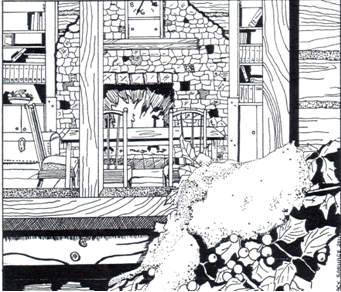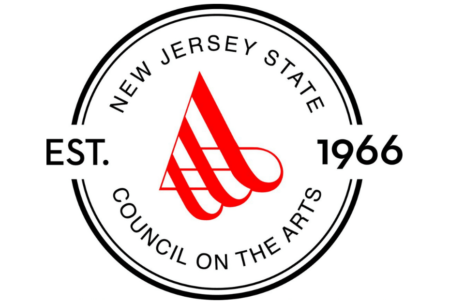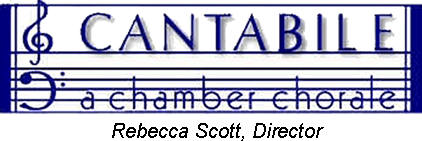Program Notes- Ancient Spirits~Modern Inspiration
 Ancient Spirits~Modern Inspiration
Ancient Spirits~Modern Inspiration
Dec. 3, 2011
Rebecca Scott
We begin with old chants and melodies which turn into prayers for peace and contentment at this holiday time, and then to requests for blessings at the new year. We end with new songs inspired by the old traditional texts, set in respectful classic form by W.A. Mozart and in the jubilant, free expression of contemporary sound by John Rutter.
Psalm 114: Sephardic cantillation/Gregorian chant arr. Joshua R. Jacobson
Jacobson comments:
“Ultimately, the origin of Jewish music can be found at its source in the ancient Temple that stood in Jerusalem over 2000 year ago. That music, although hidden by the mists of time, finds its contemporary echo in certain chants of modem synagogues and churches. Inspired by the work of musicologist Eric Werner (The Sacred Bridge, (959), I
have chosen a Gregorian chant (tonus peregrinus) and a Sephardic (Judaeo-Spanish) cantillation for the text of Psalm 114. The strong similarity between these two chants suggests a common origin in the ancient Temple in Jerusalem, before the Christian and Jewish faiths split into separate streams.”
Mi AI Har Chorev:
A medieval Jewish chant from circa 1100: Ovadya HaGer Ovadya (originally Johannes or Giovanni) was born in Oppido sometime around the year 1070. In the year 1102, he left the priesthood and converted to Judaism. Subsequently, he wandered from Bagdad to Aleppo to Cairo. The text is a divine eulogy of Moses composed by Amir Ibn Sahal, a pay tan (religious poet) who lived in the twelfth century. We shall probably never know whether this music was truly composed by Ovadya, or whether he transcribed a chant that he heard from another hazzan.
(Source: Alfred Sendrey, The Music of the Jews in the Diaspora, Thomas Yoseloff Publisher, Cranbury, New Jersey, 1970.)
Gaudete:Traditional English Carol arr. J. David Moore
This is a Latin carol with alternating choral refrain, solo verses, and men and women’s voices. The verses and chorus of this joyous work were first published in 1582 in a collection of Swedish sacred carols, Piae Cantiones. The words were set to an older standard liturgical tune, as was common for the time, and have had a number of settings since. This particular tune has found favor in less traditional circles, perhaps best known for having been an a cappella hit recording in 1973 by the English electric folk group Steelye Span.
Baruch EI Elyon– by David Burger
Mr. Burger has given the world a beautiful and substantial modem setting of a wonderful traditional Hebrew text by Rabbi Baruch ben Shemuel of Mayence in the 13th century.
Mr. Burger writes:
“This poem conveys the peace and majesty of Shabbat. In it, the poet blesses the Eternal One for providing our souls with a respite from the turmoil of our daily lives. In terms both mystical and mundane, the poem celebrates the exquisiteness of familial observance of Shabbat, comparing the act of observance to a simple gift offered to God in a sacred vessel. This work is dedicated to my parent, Cantor Alfred and Bertie Burger, from whom I first learned of the peace of Shabbat. I would like to thank Joshua Jacobson for commissioning this piece, for performing it beautifully with the Zamir Chorale of Boston and for laboring over its publication. ”
Ave Maria: opus 23, no. 2
Felix Mendelssohn-Bartholdy
Mendelssohn composed his setting of the hymn of praise for the Virgin Mary for tenor solo, 8 part chorus and accompaniment of instruments with organ. In ABA form, the chorus augments the call of the soloist, “Ave Maria,” and divides into 16 parts in the return of the A section, with 8 soloists echoing each phrase. The B section presents the men’s voices in unison calling, “Holy Mary,” while the women sing softly, “Pray for us.”
Da Nobis Pacem (Verleih’uns Frieden):
Felix Mendelssohn-Bartholdy
Mendelssohn set both the German and Latin texts in the original. The work was published as Gebel nach Luterschen Worten (Prayer from Lutheran texts)
Away in a Manger: (Traditional German Carol) arr. Mack Wilberg
Still, Still, Still: (Traditional Austrian Carol) arr. Mack Wilberg
New Year Blessings: (anon. Irish blessing) Wayland Rogers
For this contemporary setting of an ancient Irish New Year’s blessing, we are delighted to have our harpist, Diane Michaels interpret the accompaniment for us.
Blessing for a new season (Shehechevanu)
Lori Hope Baumel
The text sung here in English & Hebrew, is a prayer of joy typically sung on the first night of Chanukah or for other special occasions and holidays. These days, Lori Hope Baumel, composer, arranges and produces music for education and multimedia in her studio in Wellington, Florida. But from 1987 to 1990, she conducted, composed and arranged for the Steven Wise Free Synagogue Choir in Manhattan. Her many credits include the score for the Emrny award-winning television show “Kid’s Beat” (WPLG-Miami) and her soundtracks have received numerous awards. She studied at the University of Miami and with Dr. Alfred Reed.
Magnificat: from Vesperae Solennes de Confessore,
KV 339, movt. 6
Wolfgang Amadeus Mozart
This setting of the Magnificat, the Virgin Mary’s hymn of praise to the Lord, was composed as part of a solemn vespers in 1780. Vespers is the part of the liturgy generally celebrated in late afternoon or early evening, and was historically sung in Gregorian chant. However, Mozart’s setting is for soloists, chorus and organ and other
instruments. This was a composition full of both the lightness and complexity for which the composer is renowned. Mozart beautifully makes explicit the wonder and joy in Mary’s words, using his version of the rhythmic and tonal structures of the 18th century, and a complement of instruments including strings, woodwinds and organ.
Magnificat anima mea: from Magnificat 1st
movement John Rutter
Just as Mozart was able to convey musical joy and wonder in his own style, so does John Rutter in his. He uses the contemporary tonal language of larger chords and dynamic, extended complex instrumental structures and rhythms, and expands the orchestra to include percussion. Rutter seeks to have the listener swept up in Mary’s happiness, ultimately expressed by the choir’s exultant, repeated cries of “Magnificat!” This setting was composed as part of a larger, eponymous choral work which had its premiere on May 26, 1990 in Carnegie Hall, NY, conducted by the composer, with Maria Alsatti (soprano), the Manhattan Chamber Orchestra, and participating choirs in a MidAmerica Productions concert. The English singing version of the Latin text is by the composer.




 Ancient Spirits~Modern Inspiration
Ancient Spirits~Modern Inspiration